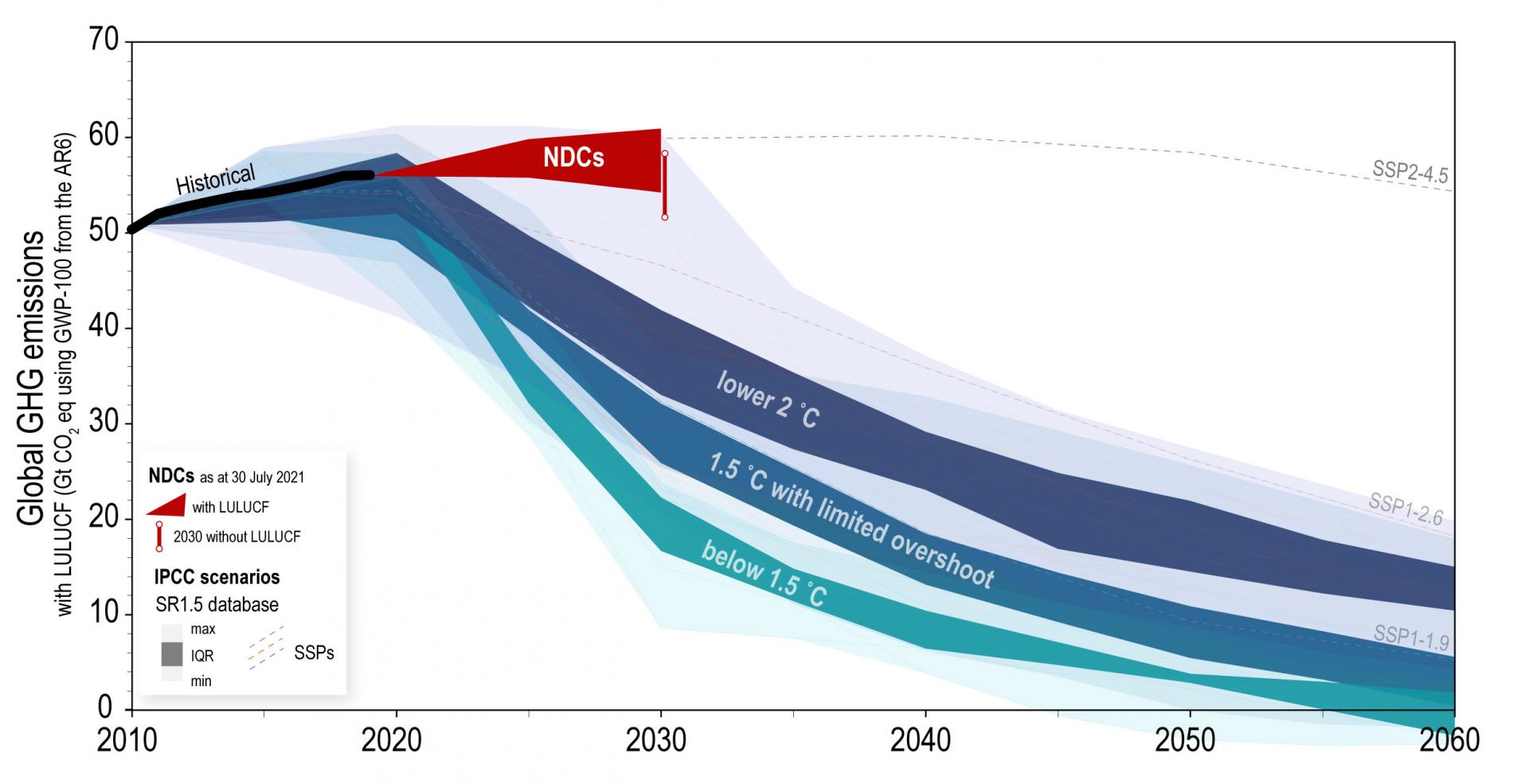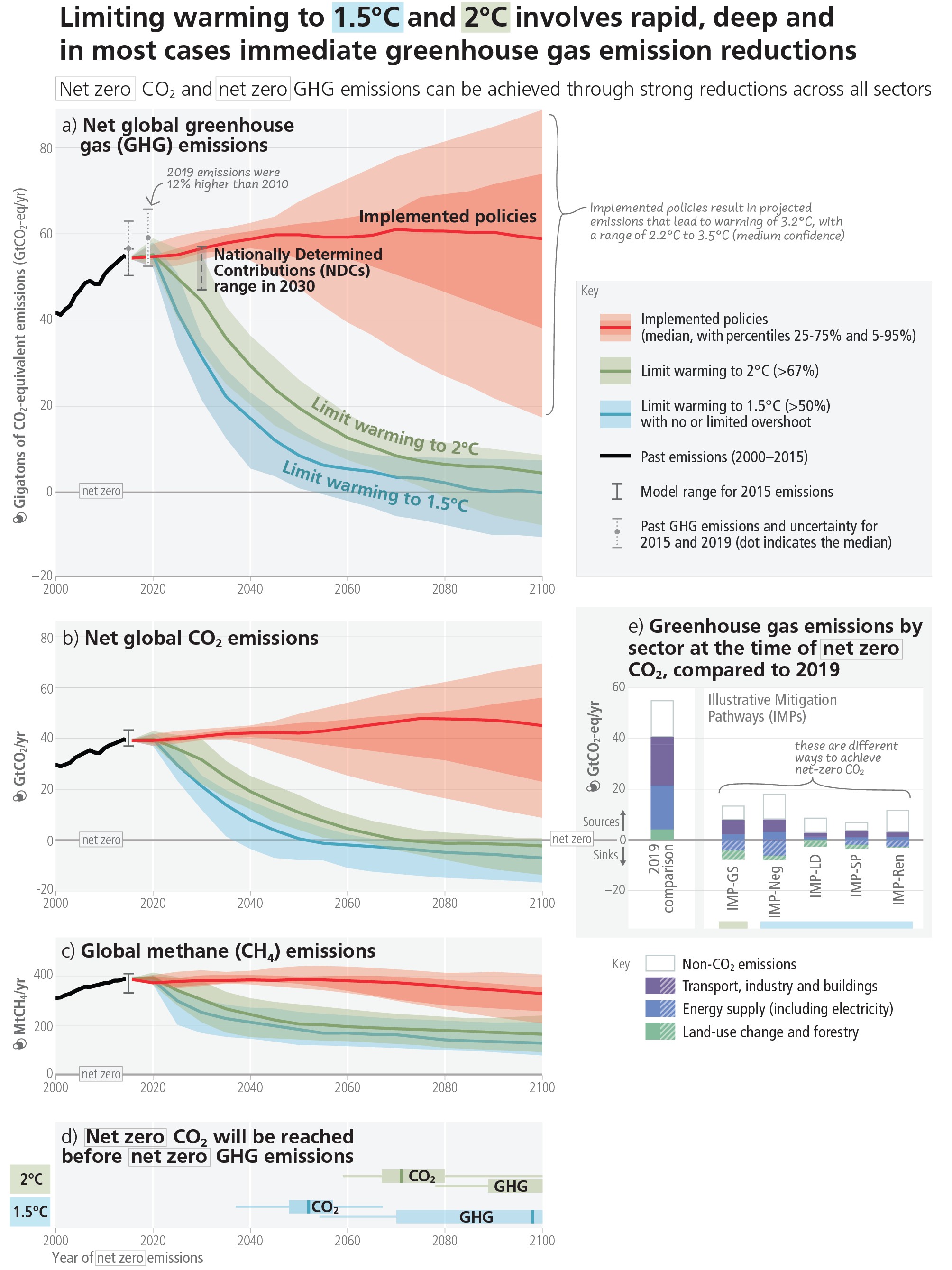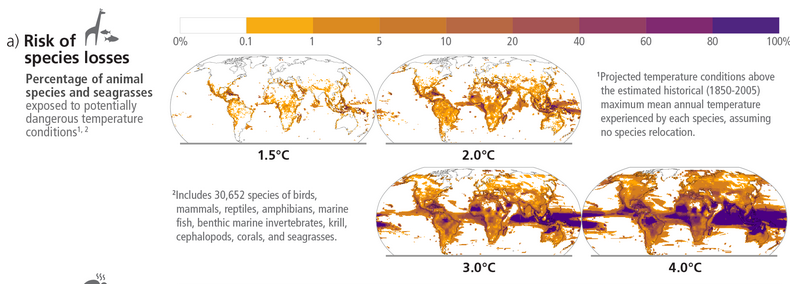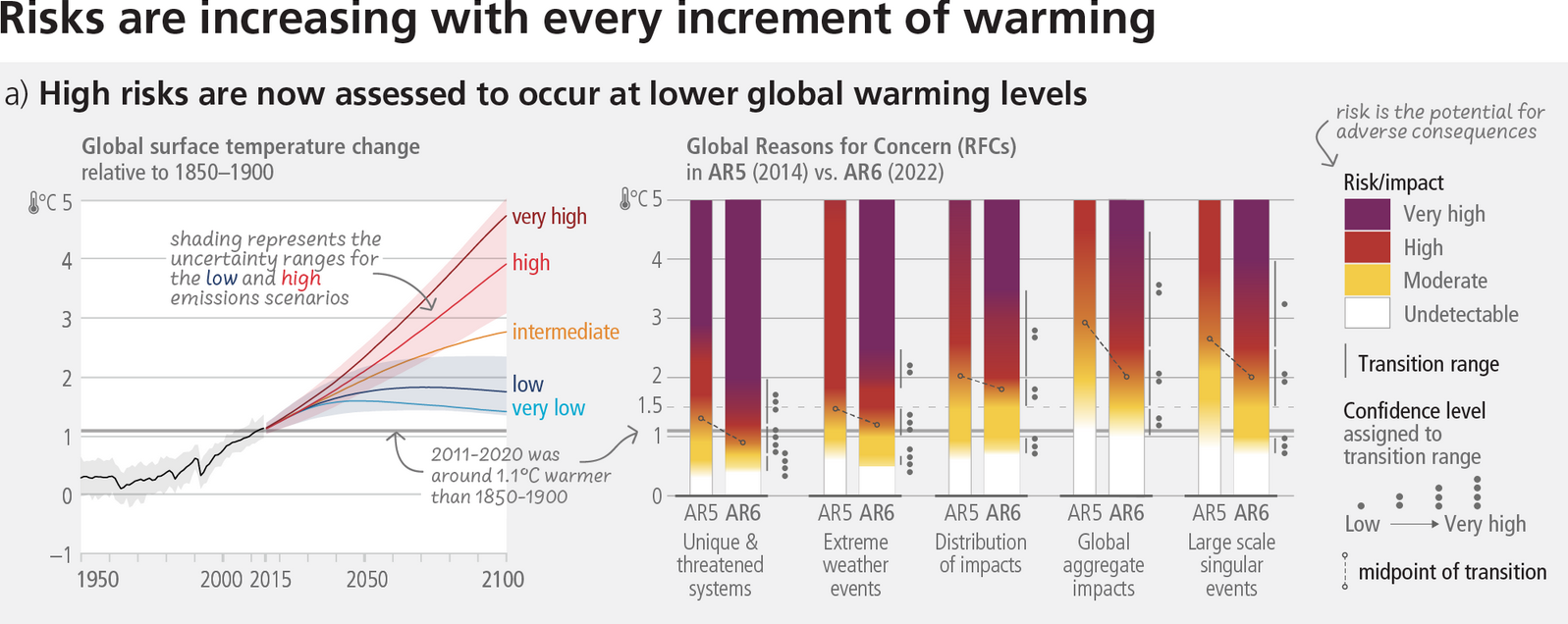March 21, 2023
Climate change
An updated climate change report has been released by the IPCC. This is essentially the final Synthesis report that will be released before we warm the world over the 1.5C threshold.
The importance of this report cannot be overstated. It sets the foundation for the current climate change analysis, adaptation investments, response/preparedness investments, and general policies.
Some terms:
- IPCC
- Intergovernmental Panel on Climate Change
- AR6
- 6th Assessment Report (the latest models)
- Synthesis Report
- latest full analysis report (released March 20, 2023)
- 1990
- The CO2 emission base year we are trying to return to.
- Working Group I
- Physical Sciences (234 authors, 14000 citations)
- Working Group II
- Impacts, Adaptation, and Vulnerability (270 authors)
- Working Group III
- Mitigation (239 authors)
- SPM
- Summary for Policymakers (of the Synthesis Report)
- NDC
- Nationally Determined Contributions. What countries intend to achieve.
- LULUCF
- Land use, land-use change, and forestry
- SSP1
- 1.5°C Shared Socioeconomic Pathways
- SSP3
- 3.6°C The do nothing Shared Socioeconomic Pathways (not unlike what we are doing now.)
Because it is so important, it is a long document and the entire document has not been released yet. Only the summaries have been released.
- Here is the policy summary. It is written in a style particular to the IPCC process which means it is both difficult to read but also very clear in its statements.
- Here are the graphics in the Summary.
Main takeaways:
- There is a large gap between where we need to be and what has been promised by governments.
- There is a much larger gap between where we need to be and what we are actually doing.
- The IPPC original target of limiting global warming to 1.5°C increase above recent historical averages looks to be impossible.
- The focus of this Synthesis report is on the impacts of 2°C.
- Current NDC policies put us on the path to 2.2°C to 3.5°C of warming.
- The current realities put us above the NDC policy model as countries are not reaching their Paris Agreement NDC targets.
- The 1.5°C goal meant that emissions needed to decline by about 45% from the 2010 level by 2030, reaching net zero around 2050.
- Net Zero is not enough, carbon must be removed from the atmosphere by some yet to be determined process in addition to reaching Net Zero by 2050.
- The previous reports show that land use for agriculture are not on the list of priorities for carbon reduction. Food production and land use continue to be priorities for adaptation.
- The updated risk assessments indicate most of the terrible things will happen at lower temperature increases than thought.
Nationally Determined Contributions. This from the 2021 IPCC study:


The next graphics are from the current Summary Report of AR6. You will notice that there is a large "error" term around the predictions. As with all models, the path could be much worse or less bad than the average path.
The ranges of 1.5°C and the 2°C paths overlap a little. This has lead to some suggesting that 2°C paths are the same as 1.5°C. The problem with that analysis is that were are no where near even the 2°C path, never mind the 1.5°C.
Only the 1.5°C guarantees a planet that is sustainable for human life.
This is not something to leave to chance. What is the point of implementing solutions if there is a chance of everything we are doing still resulting in an unlivable planet?

Two Degrees Celsius Increase? How about 3.2.
The reality is that we are heading to above 2°C.
Global GHG emissions in 2030 implied by nationally determined contributions (NDCs) announced by October 2021 make it likely that warming will exceed 1.5°C during the 21st century and make it harder to limit warming below 2°C.
There are gaps between projected emissions from implemented policies and those from NDCs and finance flows fall short of the levels needed to meet climate goals across all sectors and regions. (high confidence)
I think that this quote is the most important one of the entire report:
Policy coverage is uneven across sectors (high confidence). Policies implemented by the end of 2020 are projected to result in higher global GHG emissions in 2030 than emissions implied by NDCs, indicating an ‘implementation gap’ (high confidence).
Without a strengthening of policies, global warming of 3.2 [2.2–3.5]°C is projected by 2100 (medium confidence).
Even at the 2°C increase (1.7-2.3C range) in world temperatures most places experience heat and food loss leading to longer than a few days where people will not be able to go outside during the summer and crop failure.
At 3.2 very bad things start to happen.




Risk analysis updated
Why does all this seem much worse than in previous reports?
The risk assessment of AR6 (the new one) and AR5 are very different. Things get much worse, much faster, and at lower temperature increases than previously thought.
This graphic compares the AR5 to AR6 models. The downward sloping line between the columns on the right indicate how much earlier bad things happen.
That is, how little global mean temperatures have to increase before major changes to the climate happen.

Add to this the limited adaptation that is going on and you get this little graphic.
The darker the colours, the higher the chance of very bad negative consequence. Red is High Impact.

Food insecurity becomes impossible to adapt to at SSP3 (3.6°C increase) at 3°C.
What can we do about all this? I think that I have outlined it here and more publicly here.
I am not sure what else to say about it. This is species-level existential and humans do not have a good track record on responding to those kinds of things until it is so obviously bad that you cannot avoid change.
We cannot wait that long.
If you are in a union bureaucracy, more action through Trade Unions for Energy Democracy is one of the best places to put resources.
If you are a climate activist then start a climate committee in your workplace and reach out to your national union to demand action.
If you are not in a union, then putting pressure on the government is the only option. We must invest in alternatives. Canada is not doing much right now and we are one of the richest countries on the planet. We must implement change, support workers who are affected with correct supports, and start investing in adaptation to what is coming.
There really is no alternative.